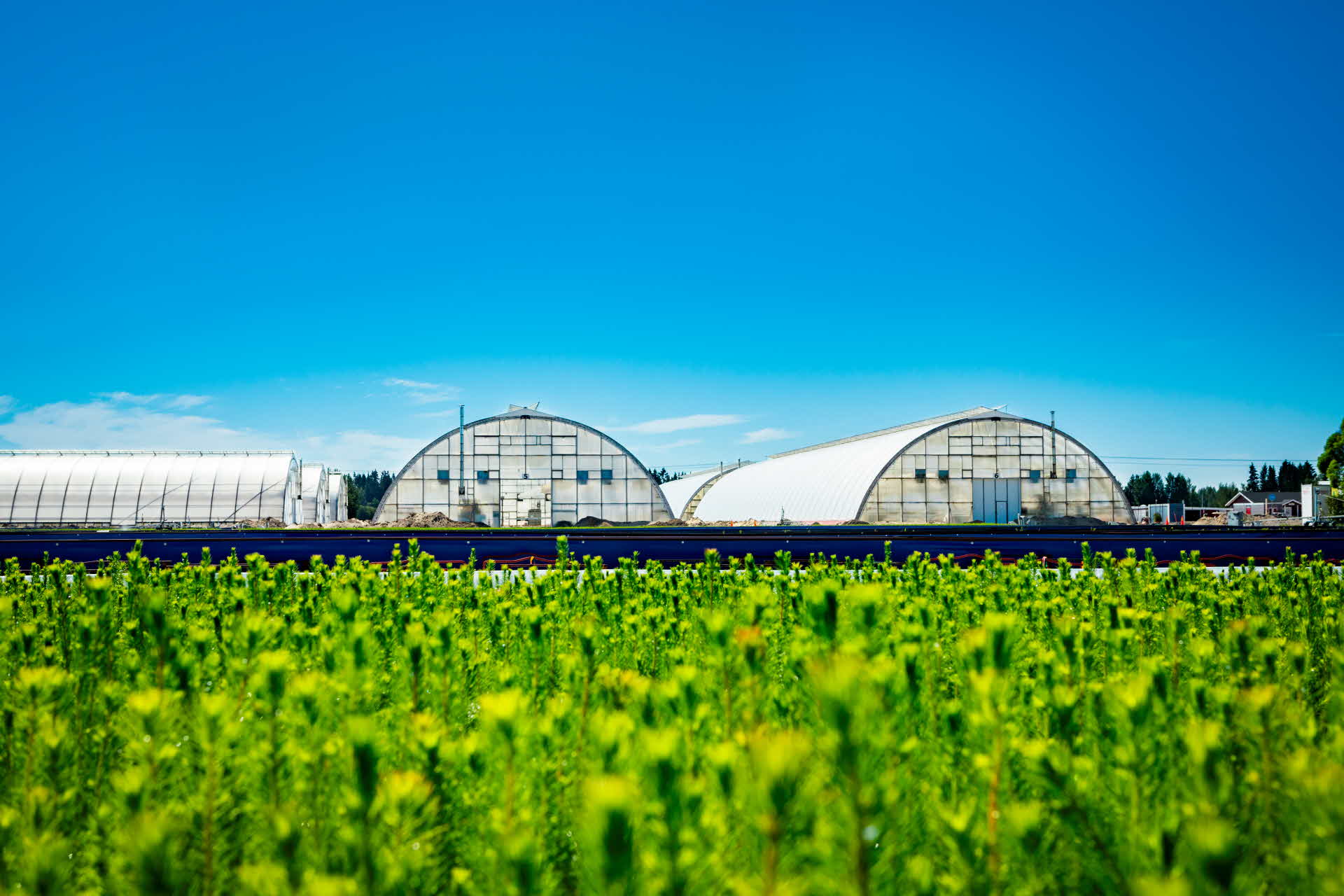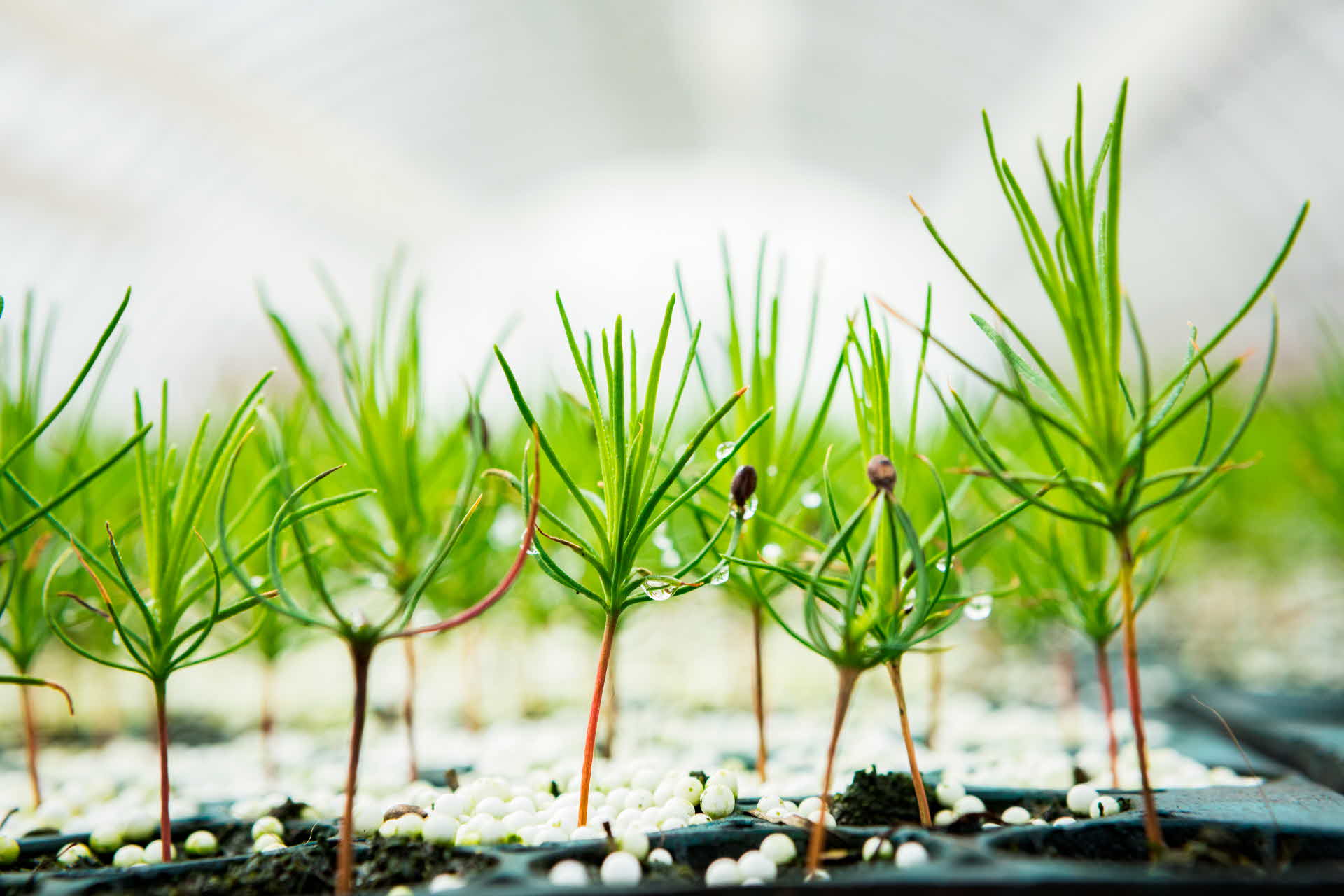
- MEDIA
- 100 MILLION TREES
SCA creates 100 million new climate-beneficial trees every year
- Article
SCA delivers some 100 million tree seedlings every year – seedlings that drive SCA’s climate benefit of approximately 13 million tonnes a year. First, they sequester carbon dioxide while they grow and ultimately they contribute sustainable wood raw materials for a wide variety of products. “Trees are efficient carbon dioxide sinks and generate climate benefits over many years,” says Thomas Vestman, Nursery Director.
The greenhouses and large open fields at SCA’s nurseries are bursting with growing seedlings. They are not that big yet – only between 10 and 20 centimetres tall – but photosynthesis is in full swing. Seedlings can grow up to one centimetre a day.
After an appropriate period, seedlings are ready to be planted and become the start of the next generation of forest. More than 100 million pine, spruce and lodgepole seedlings are delivered every year. Approximately 45 per cent are planted on SCA’s own land, with the remainder being delivered to other forest owners.
“One in four seedlings that are planted in Sweden comes from us,” notes Thomas.
This is enough for roughly 50,000 hectares a year – the equivalent of 100,000 football pitches!
More forest than ever
Planting after felling is the most efficient way to grow new forest. And this has never been more important because growing forests sequester carbon dioxide. For every cubic metre of stemwood that trees grow, they bind 1.3 tonnes of carbon dioxide from the atmosphere.
“SCA manages its forests so that the volume of timber constantly increases. We’ve never had more forest raw material than we have now, and planting is a key part of that. For every tree cut down, SCA plants at least two new ones,” says Thomas.
Other important measures in forest management include preparing ground prior to planting and to clear and thin in good time. SCA also fertilizes specific areas and plants fast-growing lodgepole pine on smaller areas of its land.
Growth outstrips felling, so forests are constantly sequestering more carbon. Every year, SCA forests sequester almost six million tonnes of carbon dioxide – net, which is roughly as much as all the emissions from industrial machinery in Sweden every year.
Oil and carbon can be phased out
However, the carbon dioxide that growing forests sequester is not the only climate benefit the forestry industry has to offer. It also generates reductions in fossil emissions that arise when forest products replace products made from fossil materials. Paper can replace plastic, and wood can replace steel and concrete, for example, so that oil and carbon can be phased out.
“It’s important that our forests grow well because this maximises their climate benefit. Higher growth rates mean that we get access to more sustainable raw materials that can replace more fossil-based products,” explains Thomas.
Another crucial climate advantage of wood products is that they store carbon dioxide. Carbon dioxide that has been sequestered in trees’ biomass continues to be stored throughout the entire lifespan of wood products. Long-lived products, such as sawn timber used in houses, store carbon for centuries. As much as 90 per cent of SCA’s wood products become long-lived products, which means that storage becomes a vital aspect of generating climate benefit.
Multiple climate benefits
The UN Climate Convention states that there are two approaches to protecting the climate: to increase carbon sequestration; and to reduce fossil emissions. Seedlings from SCA nurseries thus contribute to both.
“They increase storage by sequestering carbon as they grow – carbon that they then continue to store when trees are felled and turned into products. And they contribute to reducing fossil emissions, by becoming sustainable raw materials that enable the phasing out of fossil materials,” concludes Thomas.

